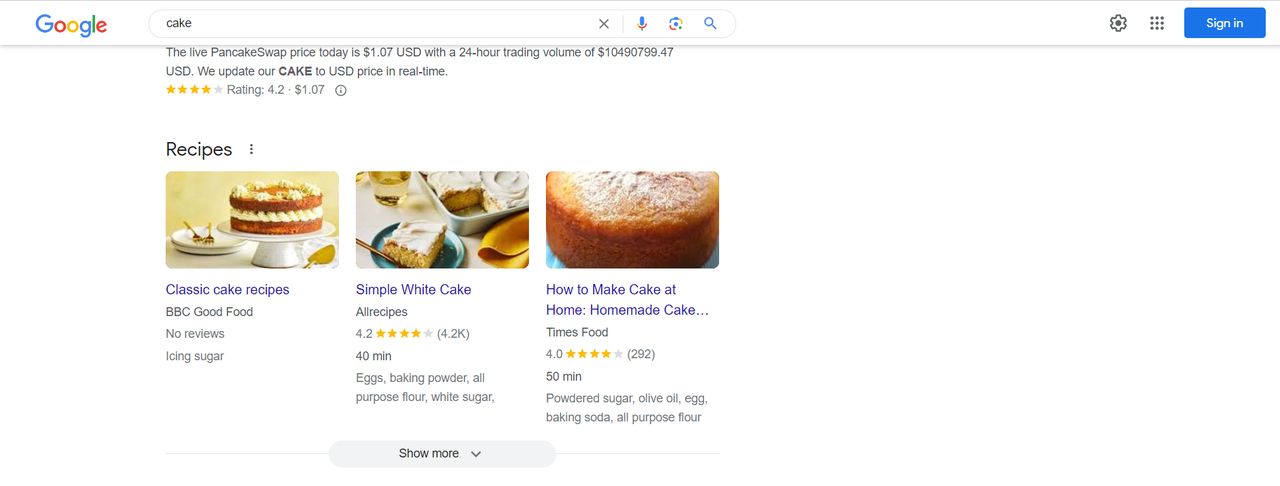Product Schema, also known as Product Markup or Product Structured Data, is a specialized type of structured data markup that helps search engines understand the content on your e-commerce website, particularly the details about your products.
In essence, Product Schema provides search engines with additional context and information about your products, making it easier for them to display rich results and snippets in the search engine results pages (SERPs).
This not only enhances the visibility of your products but also improves the overall user experience, making it more appealing to potential customers.
Defining Product Schema

The Role of Product Schema in SEO
The primary role of Product Schema in SEO is to facilitate the communication between your website and search engines. It does so by using a structured format to provide detailed information about your products.
This information can include product names, descriptions, prices, availability, ratings, reviews, and much more. By structuring this data, search engines can better understand and categorize your products, which can lead to various benefits for your website.
One of the key advantages of Product Schema is its impact on organic search results. It allows search engines to display rich snippets, which are visually appealing and informative. Rich snippets can include product images, star ratings, and other relevant data, making your product listings stand out and draw more attention from potential customers.
Moreover, Product Schema can contribute to improved click-through rates (CTR) because users are more likely to click on visually enhanced and informative results.
The additional information provided by structured data can help users make informed decisions, thus increasing the chances of them visiting your website and making a purchase.
Benefits of Product Schema
Implementing Product Schema on your e-commerce website offers several notable benefits:
- Enhanced Visibility: By using Product Schema, your product listings can appear as rich results in the SERPs, making them more prominent and appealing to users.
- Increased CTR: Rich snippets and structured data can boost click-through rates, as users are more likely to click on visually enriched search results.
- Better User Experience: Product Schema helps provide users with essential product information right on the search results page, saving them time and effort when looking for the right product.
- Improved SEO Performance: Structured data can contribute to better rankings, as search engines favor websites that provide clear, organized, and relevant information.
- Competitive Advantage: Not all websites use Product Schema, so by implementing it, you can gain a competitive edge and stand out in the crowded e-commerce landscape.
The Necessity of Product Schema for E-commerce SEO

Product Schema and Rich Snippets
Product Schema is not just an optional feature for e-commerce websites; it is a necessity for optimizing your SEO performance. One of the key aspects of its necessity lies in its ability to enable rich snippets in search results.
Rich snippets are visually enhanced search results that provide users with more information about a webpage's content. When Product Schema is implemented, it helps search engines display these rich snippets, which can include product images, star ratings, prices, availability, and other crucial details. This added information significantly improves the visibility and click-through rates of your product listings.
For e-commerce websites, rich snippets are a game-changer. They make your products stand out in search results, catching the eye of potential customers and increasing the likelihood of them clicking on your listings.
Without Product Schema, you miss out on this valuable opportunity to showcase your products effectively in search results.
This is why implementing Product Schema is not just a choice but a necessity for e-commerce businesses looking to succeed in the highly competitive online marketplace.
Elements of Product Schema

Name, Description, Image, ProductID, Price, Reviews, Availability, Brand
When implementing Product Schema, there are several essential elements or properties that you should include. These elements provide search engines with crucial information about your products, making it easier for them to understand and categorize your listings. Here are some of the key elements to include in your Product Schema markup:
- Name: The name of the product, which should be clear, concise, and accurately represent the product.
- Description: A brief and informative description of the product, highlighting its key features and benefits.
- Image: High-quality images of the product, helping users and search engines visualize the item.
- ProductID: A unique identifier for the product, such as a SKU or UPC code.
- Price: The price of the product, including any discounts or special offers.
- Reviews: Customer reviews and ratings, providing social proof and enhancing the user experience.
- Availability: Information about the product's availability, including stock status and delivery options.
- Brand: The brand or manufacturer of the product, which can be important for users searching for specific brands.
Including these elements in your Product Schema markup is essential for providing comprehensive and accurate information to both search engines and potential customers.
Required and Recommended Properties for Product Schema Markup
When working with Product Schema, it's important to understand the distinction between required and recommended properties. Required properties are essential for creating valid structured data markup, while recommended properties enhance the user experience and can contribute to more informative and engaging search results.
Required Properties:
- Name: The name of the product.
- Image: High-quality images of the product.
- Offer: Information related to the product's price and availability.
- ProductID: A unique identifier for the product.
Recommended Properties:
- Description: A detailed product description.
- Reviews: Customer reviews and ratings.
- Brand: The brand or manufacturer of the product.
By including both required and recommended properties, you can maximize the benefits of Product Schema for your e-commerce website and SEO efforts.
How to Create Product Schema Markup
Step One: Add Required Properties for Product Structured Data
Creating Product Schema markup involves a series of steps, with each step contributing to a well-structured and informative data format.
In the first step, you'll focus on adding the required properties for your product structured data. These properties are fundamental for creating a valid and effective Product Schema markup. Here's what you need to do:
- Name: Ensure you include the product's name in your markup. This should be a clear and concise representation of the product.
- Image: Add high-quality images of the product. Images enhance the visual appeal of your listing in search results.
- Offer: Include information related to the product's price and availability. This helps users make informed decisions.
- ProductID: Assign a unique identifier, such as a SKU or UPC code, to each product.
By adding these required properties, you create a foundational structure for your Product Schema markup.
Step Two: Review your Product Structured Data
After adding the necessary properties, it's crucial to review your product structured data thoroughly. Ensure that all information is accurate and complete.
Validate that the structured data accurately represents your products, paying close attention to names, images, prices, and availability. Consistency and accuracy are essential for effective structured data.
Step Three: Deploy your Product Structured Data to Relevant Pages
To make the most of your Product Schema markup, it's essential to deploy it to the relevant pages on your website. This typically includes product detail pages, category pages, and any other pages that showcase your products.
Make sure that the structured data is applied consistently across all relevant pages. This ensures that search engines can understand and categorize your products accurately.
Step Four: Validate your Pages to Ensure Structured Data is Working
The final step in creating Product Schema markup is validating your pages using Google's Structured Data Testing Tool to ensure the data functions as intended.
Validation helps identify and fix issues, ensuring compliance with search engine guidelines. This step is crucial for effective Product Schema markup, enhancing SEO, and product visibility in search results.
These steps will benefit your e-commerce website's SEO and user experience.
Testing and Implementing Product Schema
Using the Schema Markup Validator

Before deploying your Product Schema markup, it's essential to test it for accuracy and validity. One way to do this is by using the Schema Markup Validator.
This online tool allows you to enter your structured data markup and verify that it conforms to the schema.org guidelines.
To use the Schema Markup Validator:
- Go to the validator tool provided by schema.org or any other trusted source.
- Paste your Product Schema markup into the validator.
- Click the "Validate" or "Check" button.
- Review the results to ensure that your structured data is error-free and follows the required format.
Any errors or warnings detected by the validator should be addressed before implementing the markup on your website.
Using the Rich Results Testing Tool

In addition to the Schema Markup Validator, Google offers a Rich Results Testing Tool specifically designed to test structured data for rich results in search.
To use the Rich Results Testing Tool:
- Go to the Rich Results Testing Tool provided by Google.
- Enter the URL of the page where you've implemented the Product Schema markup, or paste the structured data directly.
- Click the "Test URL" or "Run Test" button.
- The tool will analyze the structured data and provide feedback on whether your markup is eligible for rich results and whether it contains any errors.
- Review the results and address any issues or errors identified by the tool.
How to Fix Product Schema Markup Errors?
If either the Schema Markup Validator or the Rich Results Testing Tool identifies errors in your Product Schema markup, it's crucial to address these issues before implementing the markup on your website. Here are some common errors and how to fix them:
- Missing or Inaccurate Information: Ensure that all required properties, such as Name, Image, Offer, and ProductID, are present and accurately represent your products.
- Invalid Markup Syntax: Carefully review the structured data markup to ensure it follows the schema.org guidelines and uses the correct syntax. Common errors include missing quotation marks or brackets.
- Inconsistent Data: Verify that the information in your structured data is consistent with the actual product details on your website. Inconsistencies can lead to errors and discrepancies.
- Unsupported Properties: Some properties may not be supported for certain types of products. Make sure you're using properties that are appropriate for the products you're showcasing.
By addressing these errors and following the guidelines provided by the validator tools, you can ensure that your Product Schema markup is error-free and ready for implementation.
What is SKU in Product Schema Markup?

In the context of Product Schema Markup, SKU stands for Stock Keeping Unit. It is a unique code or identifier assigned to each product in your inventory. SKUs are essential for e-commerce businesses as they help manage and track products efficiently.
Including SKUs in your Product Schema markup is a recommended best practice, especially for e-commerce websites with a wide range of products.
It ensures that your products are correctly identified and can be displayed with rich snippets in search results, enhancing the user experience and improving your SEO performance.
Result types and enhancements with Product Schema
Product Schema enhances the way your products appear in search results, providing various result types and enhancements that can significantly improve the user experience and increase the visibility of your products.
Here are some of the result types and enhancements you can achieve with Product Schema:
Product Review Page
When you use Product Schema on a product review page, you can provide rich information about the reviewed product. This may include star ratings, review summaries, and even user-generated reviews. This enhances the search result's appeal and trustworthiness, making it more likely for users to click on the link and explore the product review.
Shopping Aggregator Page
For shopping aggregator websites, Product Schema helps display essential information about products and their prices. This can include details like product names, images, prices, and availability. When users see this structured data in search results, it enables them to quickly compare prices and make informed decisions, often resulting in higher click-through rates.
Product Page with an Offer
If your e-commerce website offers products with special deals or discounts, Product Schema allows you to highlight these offers in search results. This can include information about discounts, promotional pricing, and limited-time offers. Users are more likely to click on these results, attracted by the potential cost savings.

Indicating Free Shipping
Many shoppers are looking for free shipping options when making online purchases. Product Schema allows you to indicate whether a product comes with free shipping. This is a powerful selling point that can attract more users to your product listings.
Pricing and Pricing Measures
Product Schema enables you to include detailed pricing information, such as the regular price, sale price, and any applicable taxes or fees. This level of transparency and accuracy in pricing helps users make informed decisions about their purchases.
By implementing Product Schema with these enhancements, you can make your products more appealing and informative in search results, ultimately driving more traffic and conversions on your e-commerce website. It's an essential component of modern SEO strategies for online businesses.
Post-Implementation: Analysing the Impact of Product Schema Markup
After Deploying structured data for the First Time
Once you've deployed Product Schema for the first time on your e-commerce website, it's essential to monitor its impact on your search engine performance.
This post-implementation analysis is crucial for assessing how well Product Schema is benefiting your site.
Key steps to analyze the impact after deploying structured data for the first time include:
- Monitoring Rich Snippets: Keep an eye on your search results to see if rich snippets are appearing as intended. This is one of the primary benefits of Product Schema, and you want to ensure it's working effectively.
- Click-Through Rate (CTR): Analyze whether the implementation of Product Schema has resulted in an increase in CTR for your product listings. Higher CTR is a positive sign of the structured data's impact.
- Traffic Trends: Examine your website's traffic trends to see if there's a noticeable improvement in the number of visitors coming from search engine results. This can indicate the effectiveness of your structured data.
- Conversion Rate: Assess whether the implementation of Product Schema is positively influencing your conversion rate. More visitors should ideally lead to more conversions.

After Releasing New Templates or Updating your Code
If you've made changes to your website templates or updated your code, it's important to analyze how these modifications may have affected your Product Schema. Here are the key considerations:
- Structured Data Validation: After template or code changes, revalidate your structured data using tools like the Schema Markup Validator to ensure it's error-free and compliant with the latest standards.
- Rich Snippet Continuity: Check whether your rich snippets are still displaying correctly. Any disruptions can impact user engagement and click-through rates.
- Traffic and CTR Analysis: Examine whether the changes have had any impact on your website's traffic and click-through rates. It's essential to ensure that the modifications have not negatively affected your SEO performance.
- Conversion Analysis: Evaluate whether the changes have led to changes in your conversion rates. You want to ensure that the updates have a positive impact on your e-commerce goals.
Analyzing Traffic Periodically
Even after the initial implementation and potential code updates, it's a good practice to periodically analyze your traffic and SEO performance to ensure that Product Schema continues to benefit your website. Here are some strategies for periodic analysis:
- Regular SEO Audits: Conduct regular SEO audits to identify any issues or opportunities related to Product Schema. This can help you catch problems early and make improvements.
- Ongoing Rich Snippet Monitoring: Continue monitoring your rich snippets to ensure they consistently appear in search results. Any inconsistencies should be addressed promptly.
- User Engagement Metrics: Analyze user engagement metrics, such as bounce rates, time on site, and conversion rates, to determine how well your structured data is contributing to a positive user experience.
- Competitor Analysis: Keep an eye on your competitors and their use of Product Schema. If they are implementing it effectively, it may be time to revisit and enhance your own structured data.
- Feedback and Reviews: Pay attention to user feedback and reviews related to your product listings in search results. This can provide valuable insights into the effectiveness of your Product Schema.
Periodically analyzing your traffic and SEO performance ensures that your Product Schema implementation remains effective and up-to-date. It allows you to adapt to changes in search engine algorithms and user behavior, ultimately maximizing the benefits of structured data for your e-commerce website.
By following these analysis steps, you can continuously optimize your Product Schema implementation and ensure it positively impacts your website's SEO performance and the overall user experience.

How Product Schema Contributes to Your Overall SEO Strategy?
Product Schema is a powerful tool that plays a significant role in your overall SEO strategy. By providing structured data about your products to search engines, Product Schema contributes to a more effective and engaging online presence.
The Importance of Product Schema
Product Schema is essential for several reasons, and understanding its importance is key to comprehending its impact on your SEO strategy:
- Enhanced Visibility: Product Schema enables rich snippets in search results, making your products more visible and appealing to users. Rich snippets display additional information like images, star ratings, and pricing, which can significantly improve click-through rates.
- Informative Search Results: When users search for products, they often want to quickly access important details. Product Schema provides a structured format for presenting this information, helping users make informed decisions directly from the search results page.
- Categorization and Relevance: Search engines rely on structured data to understand the content of webpages. Product Schema categorizes your products effectively, ensuring they appear in relevant search results for users interested in your offerings.
- Competitive Advantage: Not all e-commerce websites utilize Product Schema, giving you a competitive edge. Implementing structured data can set your products apart and attract more potential customers.
- User Experience: Product Schema contributes to a better user experience by providing detailed information, reducing the need for additional clicks to find product details, and building trust through transparency.
Incorporating Product Schema into your SEO strategy is more than a recommendation; it's a necessity for e-commerce businesses aiming to succeed in the competitive online marketplace.

Boosting Trust and Sales with Schema Markup
Product Schema isn't just about technical optimization; it directly impacts user trust and sales. Here's how schema markup boosts trust and drives sales:
- Trustworthiness: Rich snippets created through Product Schema provide visual cues, such as star ratings and reviews, that convey trustworthiness. Users are more likely to click on listings that display such information, as it indicates the product's quality and popularity.
- Efficient Decision-Making: Structured data helps users quickly assess whether a product meets their needs. Instead of navigating to multiple product pages, they can gather essential information from the search results, streamlining the decision-making process.
- Higher Click-Through Rates: Rich snippets created with Product Schema often result in higher click-through rates. When users see visually appealing and informative results, they are more inclined to click on them, increasing the chances of visiting your website.
- Improved Conversion Rates: By helping users make informed decisions, Product Schema can enhance your conversion rates. Users who click through to your website are more likely to convert into customers because they have a better understanding of the product.
In summary, Product Schema doesn't just influence your website's technical SEO; it also plays a pivotal role in building trust and driving sales. When users trust your product listings and have access to key information right in the search results, your e-commerce business can thrive in a competitive digital landscape.
Troubleshooting and Improving Your Product Schema Strategy
When it comes to Product Schema in SEO, it's not just about implementation; it's also crucial to troubleshoot and continually improve your strategy. In this section, we'll explore how to identify potential issues with your Product Schema and overcome common challenges, including missing reviews, missing SKU, and unparsable structured data.
Identifying Potential Issues with Your Product Schema
Identifying and addressing issues with your Product Schema is essential to ensure its effectiveness in enhancing your SEO and user experience. Here are some common issues to watch out for:
- Validation Errors: Check for validation errors in your structured data using tools like the Schema Markup Validator. Validation errors can prevent your structured data from being properly understood by search engines.
- Missing or Incorrect Information: Ensure that all required properties, such as product names, descriptions, prices, and images, are correctly and comprehensively included in your Product Schema markup. Missing or incorrect information can lead to incomplete or inaccurate rich snippets.
- Inconsistent Structured Data: Make sure that your structured data is applied consistently across all relevant product pages on your website. Inconsistencies can confuse search engines and result in incomplete or incorrect rich snippets.
- Failure to Keep Data Updated: If your product information changes, such as prices or availability, it's essential to update your structured data accordingly. Failure to do so can lead to outdated information in search results.
Overcoming Common Challenges: Missing Reviews, Missing SKU, Unparsable Structured Data
As you troubleshoot your Product Schema, you may encounter common challenges. Here's how to address them:
Missing Reviews:
- Solution: If your products lack reviews in your structured data, encourage customers to leave reviews on your website. Make it easy for customers to provide feedback, and consider sending post-purchase review requests.
Missing SKU:
- Solution: Ensure that each product has a unique identifier, such as a SKU or UPC code. If SKUs are missing, update your product data to include them. This helps search engines distinguish between products.
Unparsable Structured Data:
- Solution: If your structured data is unparsable, it may have formatting or syntax errors. Use the Schema Markup Validator to identify and fix any issues. Ensure that your markup adheres to the guidelines set by search engines.
By addressing these common challenges and regularly monitoring your Product Schema, you can troubleshoot issues and keep your structured data up to date and accurate, ultimately improving your SEO and user experience.
Conclusion: Embracing the Power of Product Schema for Your SEO Success
Product Schema is a valuable tool that can significantly enhance your SEO strategy and boost your e-commerce website's performance. By providing structured data about your products, you not only improve your visibility in search results but also build trust with potential customers.
Embracing Product Schema and continually optimizing your strategy can make a substantial difference in your SEO success.
In conclusion, Product Schema is more than just a technical element of SEO; it's a user-focused approach that provides valuable information to search engine users, helping them make informed decisions.
When used effectively, Product Schema can set your e-commerce business apart from the competition and drive higher click-through and conversion rates.
To unlock its full potential, ensure that your structured data is accurate, up to date, and free from common issues.
By embracing the power of Product Schema, you can achieve SEO success and create a more satisfying experience for your website visitors.


